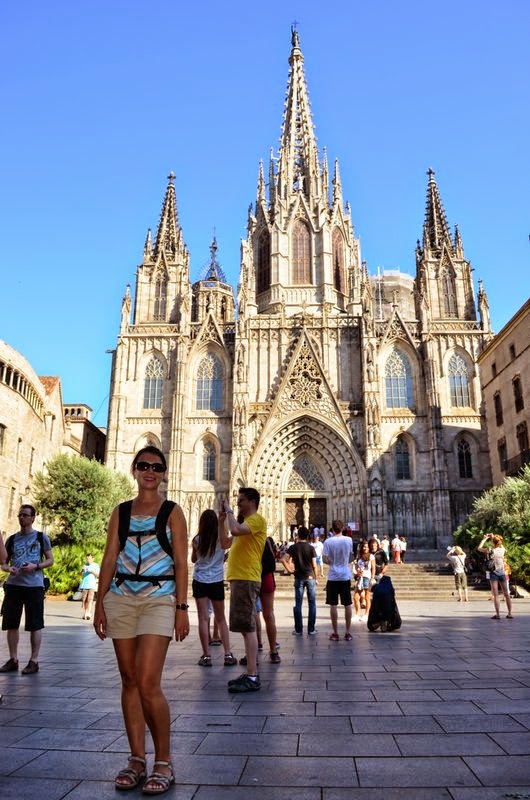Barcelona was one of our favorite cities we visited in Europe. I was fascinated with the mix of history and modern elements. I loved the tapas and paellas, flamenco show totally blew my mind and my husband swears that it was the best show in his life, and Gaudi works.
 |
| Aerial view of Barcelona taken from Guell Park |
Few facts about Barcelona:
Barcelona is the second largest city in Spain.
In 2010 Barcelona was the 48th most populated city in the world.
Barcelona is the largest metropolis on the Mediterranean coast.
Barcelona attracts 1 million visitors every week.
There are two languages spoken in Barcelona: Catalan and Spanish.
Antoni Gaudi
No other single person in the world has had such an influence on a city the way that Antoni Gaudi did and has on Barcelona. His works are all around including La Sagrada Familia,
La Sagrada Familia is a Roman Catholic Church which construction begun in 1882. The construction will last another 30 years. It is considered one of the most extraordinary churches.
 |
| La Sagrada Familia |
Casa Battlo was redesigned in 1904 and is considered one of the most notable Gaudi's residential creations. It received a nickname "House of Bones" due to its extraordinary skeletal facade.
 |
| Casa Battlo |
Park Güell is a garden complex designed by Antoni Gaudí and built in the years 1900 to 1914. It is one of the largest architectural works in south Europe.
Around the city
Placa de Torro is the last place in Catalonia where bullfights were held, since the Parliament of Catalonia passed a ban of bullfighting events on 28 July 2010 that came into force in 2012. Barcelona is the first city to forbid bullfighting.
 |
| Placa de Torro |
Cathedral de Santa Eulalia, also known as Barcelona Cathedral, is the Gothic cathedral and seat of the Archbishop of Barcelona,Spain.The cathedral was constructed from the 13th to 15th centuries, with the principal work done in the 14th century.
Santa Maria del Mar was built between 1329 and 1383 at the height of Catalonia's maritime and mercantile preeminence. It is an outstanding example of Catalan Gothic, with a purity and unity of style that is very unusual in large medieval buildings. Most churches of that time took more than 100 years to built, but this cathedral took only 55 years. The church is considered to be the finest and and only surviving example of Catalan Gothic architecture.
 |
| Santa Maria de Mar |
The interior of the church was burnt out by anarchists during the Spanish Civil War. Although since restored by Bauhaus-trained architects, you may still spot some fire damage.
 |
| Inside Santa maria del Mar |
Plaça Reial (In Spanish Plaza Real, meaning "Royal Plaza"). It was designed by Francesc Daniel Molina i Casamajó in the 19th century. The lanterns there were designed by Antoni Gaudí.
 |
| Placa Reial |
Flamenco Show
This is the favorite thing we did on out 3 week Europe trip - The flamenco at El Cordobès that has been known as one of the best locations in Barcelona for Flamenco since it's creation in 1970.
Food in Barcelona
Santa catarina market has been in operation since 1848 and is located in the center of the city.
 |
| Enjoying paella and sangria |
 |
| Sangria |
 |
| Pinchos |




















































